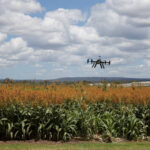Some Guidance on Business Interruption
This is an article written by Dr Allan Manning, probably the foremost expert in respect to Business Inrterruption in Australia, its implications and benefits.
We trust the read will be worthwhile and if it provokes any queries please contact the Austbroker Terrace team immediately.
As follows –
The first two months of 2011 is a period that many of us will never forget. At the time of writing there are 147,000 plus claims arising out of the natural disasters in Australia this year with estimated claim payments of $3.1 billion.
In New Zealand the attention has been on the devastating earthquake which has left an insurance bill of conservatively NZ$5 billion.
Such events can also cause a disruption to a business that has not been directly affected. A failure of supply by a public utility, closure by pubic authority, prevention of access, inability to supply or purchase by a supplier or customer of the business are all classed as business following nearly natural disasters where a disruption can still occur just because the normal customer base is no longer there and/or temporarily disinterested in the service. This is referred to as ‘general area’ or ‘wide area’ damage, or ‘depopulation’ in New Zealand.
But what triggers a business interruption claim? In an article such as this we can only give a general overview that does not take into account differing factual circumstances or differing policies. With a combined total of over 150 different commercial business packs available in the Australian and New Zealand markets, I have chosen the IV modified Industrial Special Risks policy for this analysis.
The trigger for cover under this policy states:
“In the event of any physical loss, destruction or damage (hereinafter in Section 1 referred to as ‘damage’ with ‘damaged’ having a corresponding meaning) not otherwise excluded happening at the Situation to the Property Insured described in Section 1the Insurer(s) will, subject to the provisions of this Policy including the limitation on the Insurer(s) liability, indemnify the Insured in accordance with the applicable Basis of Settlement.”
FLOOD
With Flood, the ISR policy has a standard exclusion (I will return to property exclusions later).There is a general Perils Exclusion for flood. See Perils Exclusion 3 (a) which reads:
The Insurer(s) shall not be liable under Sections 1 and/or 2 in respect of:… 3. physical loss, destruction or damage occasioned by or happening through:(a) flood, which shall mean the inundation of normally dry land by water escaping or released from the normal confines of any natural watercourse or lake (whether or not altered or modified), reservoir, canal or dam.
The words ‘escaping or released from’ can cause confusion to some people. It is generally accepted that for something to escape, which in this case is the water, it has to actually have been ‘in’ something, such as the river or dam, before it can ‘escape’ from that place.
The background to the flood definition
The definition of flood that has been used in the policies where the words ‘escaped’ appears is often found in policy wordings, and dates back priorto the public announcement by John Lamble, the then NRMA General Manager, in 1970, following an enormous rainstorm in Sydney where the water blew out drain covers and/or overflowed drains around the suburbs, and policyholders had that water plus rainwater running along the ground entering their homes.
NRMA, like many insurers at that time, did not cover flood as standard, and when Lamble made the public announcement for NRMA that this was not flood, the industry followed suit and those claims were paid by all insurers. This approach has been adopted by most insurers ever since.
This meant that under policies with this definition, where water overflowed through the drains in shower trays in Katherine homes, motels and the like, prior to parts of the town being ‘flooded’ in 1998, damage was not treated as flood damage. It was determined that the sewer system could not empty into the Katherine River and that this water, which had not made it to the river, had therefore not ‘escaped’. As such, claims where damage was caused as described were paid.
Some insurers with a low-risk appetite altered their definition to exclude losses from this cause in their ‘package’ policies.
Water from a man-made drain
Where the water comes out of a man-made barrel drain taking water away from what was formerly a creek, that water is considered to be flood water. What I mean here is that in many places a natural water course, a stream or creek, has been replaced by a large covered drain or pipe. Often a street or road is built over this drain. If water escapes from such a drain this is deemed to be ‘water escaping from’ a modified water course and therefore would not be covered unless ‘flood’ is an insured peril.
Since 1970, insurers have employed hydrologists to determine where water has come from. Under most policies, if the water that damaged insured property is on its way to a river, then it is rainwater running along the ground and not flood. In line with the principle of proximate cause, insurers have, in the main, accepted that damage first caused by such water is insured as rainwater damage, and if the property is later inundated by water overflowing from a river they would only exclude the additional damage.
Turning now to the words ‘released from’. This includes situations as in Brisbane when the government authorities released water at the same time as the rain was falling, which only compounded the situation.
EARTHQUAKE
Earthquake is a standard insured peril in the vast majority of policies, although policy deductibles are typically higher than for other perils. As such the policy is triggered for both Section 1 and Section 2.
Consequential loss trigger
The indemnity under Section 2 arises where there is damage to building or any other property …used by the Insured. As with Section 1, Damage is defined as physical loss, destruction or damage … not otherwise excluded provided that the damaged property is insured against such Damage and payment is made or liability admitted under Section 1.
In the absence of flood cover having been specifically insured (ie Perils Exclusion 3 (a) being deleted) all other things being equal, no claim underSection 2, Consequential Loss of Profits (Business Interruption) can be made.
If flood has been granted then cover is afforded subject to any Sub-Limit of Liability. Note the damage can be property owned or used by you at the situation.
As earthquake is typically covered, the policy is triggered for Section 2 where there is damage to insured property at the situation.
TRIGGER FOR PUBLIC UTILITIES EXTENSION
An ‘insured’ damage is a prerequisite for the operation of this extension. That is the property cannot be excluded nor the peril.
The Public Utilities Extension covers business interruption loss caused by a peril damage … at any electricity station or sub-station, gasworks or waterworks of a public supply undertaking which is situated on or immediately adjacent to the Premises shall be deemed to be loss resulting from Damage to Property used by the Insured at the Premises.
As this endorsement restricts cover to a utility at or adjacent to the situation, most brokers have sought to endorse the standard wording. A typical endorsement is UTILXPC4. This endorsement reads:
REMOTE PREMISES OF PUBLIC UTILITIES (B)
The Memorandum ‘Public UtilitiesExtension’ is amended to read: Any loss resulting from interruption of or interference with the Business directly or indirectly in consequence of Damage, anywhere in Australia to land-based premises of any communication station, electric power station or sub-station, gasworks, waterworks, sewerage pumping or sewerage treatment works of a supply undertaking from which the Insured obtains communication services, electric current, gas, water or sewage service shall be deemed to be loss resulting from Damage to Property used by the Insured at the Premises. It shall not be a condition precedent to liability under this endorsement that payment shall be made or liability admitted for damage under Section 1 of the policy. The cover provided by this extension shall be subject to the sub-limit stated in the Schedule against Remote Premises of Public Utilities (B).
Concerned by the ‘Accumulation Risk’ that multiple losses from the one event can cause by the loss a Public Utility, many insurers impose a Sub-Limit of Liability. A higher Sub- Limit is/was available at a price.
Where flood or earthquake is an insured peril the policy is triggered for losses arising through loss of power or other public utility. Where flood is not insured and this is the cause of the outage, no claim can be made. It is not whether the Public Utility has flood cover or not, but the Insured. If the Insured’s policy covers the peril then the damage at the Public Utility is deemed to have occurred at the insured premises.
TRIGGER FOR PREVENTION OF ACCESS MEMORANDUM
Similarly, an insured peril damage is a prerequisite for the operation of the below-mentioned extensions of cover. Section 2 includes a memorandum of cover for loss following damage from an insured peril as follows:
PREMISES IN THE VICINITY (PREVENTION OF ACCESS)
Loss as Insured by the Policy resulting from interruption of or interference with the Business in consequence of damage to property in the vicinity of the Premises caused by a peril, damage as a result of which is insured hereunder, which shall prevent or hinder the use thereof or access thereto, whether the Premises or property of the Insured therein shall be damaged or not, shall be deemed to be loss resulting from Damage toproperty used by the Insured at the Premises. Loss as insured by this Policy resulting from interruption of or interference with the Business in consequence of damage to property in the vicinity of and forming part of or contained in the complex of which the Premises forms part caused by a peril, damage as a result of which is insured hereunder, which results in a cessation or diminution of trade due to temporary falling away of potential custom whether the Premises or property of the Insured therein shall be damaged or not shall be deemed to be loss resulting from Damage to property used by the Insured at the Premises.
Please note that roads and/or bridges (Property Exclusion 9) are both excluded property under astandard ISR policy and a prevention of access loss from damage to such property alone may fail even where flood cover has been granted. Cover may on occasion be granted for this exposure under Endorsement Code: HEMINXB4 which reads:
ISOLATION BY LANDSLIDE OR FLOOD
Notwithstanding Property Exclusion 9 and Perils Exclusions 3(a) and 7(c). Any loss resulting from interruption of or interference with the Business in consequence of blockage of roads or railway links, bridges or tunnels caused by landslide or flood and which prevents or hinders the use of or access to the Premises shall be deemed to be loss resulting from Damage to property used by the Insured at the Premises.
TRIGGER FOR SUPPLIERS’ and/or CUSTOMERS’ PREMISES
There is a myriad of wordings. A typical one subject to a single limit is:
UNSPECIFIED SUPPLIERS’ AND/ OR CUSTOMERS’ PREMISES (AUSTRALIA – SINGLE LIMIT) (B)
Loss resulting from interruption of or interference with the business in consequence of Damage to property at the premises, anywhere in Australia, of any direct producer or direct merchant shall be deemed to be loss resulting from Damage to property used by the Insured at the Premises.
The liability of the Insurer(s) under this endorsement, in respect of any one loss or series of losses arising out of any one event or occurrence at any one premises, shall be limited to amount statedin the Sub-Limit of Liability noted in the Schedule against Unspecified Suppliers’ and/or Customers’ Premises. For the purposes of this endorsement, the term ‘premises of a producer’ refers to premises, other than those described in the Public Utilities Extension to Section 2 of the policy, at which any of the goods or services used directly by the Insured are produced, assembled or stored. The term ‘premises of a merchant’ refers to premises to which the Insured directly provides goods or services.
As with the Public Utilities Memorandum, it is generally accepted that insured damage from an insured peril is required by virtue of the deeming provision. However, it is submitted that Damage is ‘insured’damage (as defined in Section 2) not otherwise excluded and any losses arising from flood are not covered unless flood cover has been obtained.
In summary, unless the Perils Exclusion for flood has been deleted, no coverage is available for flood damage or resultant losses, nor are the above extensions and memoranda triggered. Earthquake being an insured peril, losses arising at an “Unspecified Suppliers’ and/ or Customers’ Premises” in the same country where the insuredis based are covered. If it is an overseas supplier or customer as in the case of an Australian business affected by a loss in New Zealand then an ‘Overseas Suppliers’ and/or Customers’ Premises’ extension or the like is required to trigger coverage under the Policy.
TRIGGER FOR GENERAL AREA DAMAGE/DEPOPULATION
This is an issue that confronts many businesses after every natural disaster. They have no damage, no disruption of public utilities, no prevention of access, but simply a reduction in turnover. An example may be, who would like to go scuba diving off Christchurch at the moment? Tourists will change their plans to visit the city and those who are there or the normal residents are less inclined to seek this type of recreational activity.
Many insureds feel that as this is caused by, in the case of Christchurch, an earthquake, an insured peril, that they are entitled toclaim. This is, regrettably for them not the case. As we have seen, the policy requires a trigger that is not the peril but damage to insured property or one of the extensions of cover discussed earlier.
There is cover available in Australia on an offer and acceptance basis but this is rarely provided in New Zealand. An example of the cover is ISR endorsement DZONEPC4, which reads:
LOSS OF ATTRACTION – GENERAL AREA (B)
The second paragraph of the memorandum headed Premisesin the Vicinity (Prevention of Access) is extended to include the following clause: Any loss resulting from interruption of or interference with the Business in consequence of Damage to property within a radius of the number of kilometres set in the Schedule from the Premises which results in a cessation or diminution of the Insured’s trade or normal business operations, shall be deemed to be loss resulting from Damage to property used by the Insured at the Premises.
TRIGGER – CLOSURE BY PUBLIC AUTHORITY
All insurers restrict cover for Closure by Public Authority due to reinsurance restrictions. Typically the cover is only provided where the closure is as a result of one of the following:
(a) From closure or evacuation of the whole or part of the Insured Premises by the order of a competent public authority consequent upon: Human Infectious or Contagious Disease occurring at the Insured Premises; (b) Vermin or pests or defects in the drains or other sanitary arrangements at the Premises; (c) Poisoning directly caused by the consumption of food or drink provided on the Premises;(d) Murder or suicide occurringin or at the Premises.
However, it is noted that in some business packs the wording differs from the ISR. Some policies state:
We will pay for Loss of Income that results from an Interruption of Your Business that is caused by any legal authority preventing or restricting access to YourPremises as a result of Damage to or threat of Damage to property within a 50-kilometre radius of Your Premises.
Coverage under this extension, which includes the broad notion of threat of Damage does not, unequivocally, require Insured Damage and, in the circumstances, it could be argued that even where flood cover is not noted on the schedule as applying, flood related losses are nonetheless covered.
In support of this interpretation, it could be contended that the threat of damage is a new and different species of loss that elevates the enquiry (and the scope of the cover) to a much broader category of risk than is otherwise envisaged and specifically excluded in the insuring clauses found in the material damage and business interruption sections. In the event of doubt, and provided the ambiguity is irreconcilable, the contra proferentem rule applies, which means the wording would be construed against the insurer as drafter of the wording.












